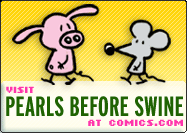Last Updated: 6:01pm BST 27/09/2007
They call themselves "grunter hunters", but the small army of Australians who spend their weekends stalking wild pigs through the bush are finding themselves increasingly outnumbered.

Paul Smith carries a dead wild pig (top) and trapped pigs that will be humanely killed

Paul Smith carries a dead wild pig (top) and trapped pigs that will be humanely killed
Their high-powered rifles, hunting dogs and "pig rigs" - specially equipped trucks - are proving no match for an explosion in the number of feral pigs roaming the country's forests, mountains and savannah plains.
Official estimates suggest there are now 23 million feral pigs in Australia, outnumbering the continent's human population of 21 million. They are the descendants of domestic pigs which explorers such as Captain Cook released as a living larder for future expeditions. The animals found Australia to be hog heaven, with plentiful food, a balmy climate and no natural predators aside from the occasional crocodile and piglet-pinching dingoes.
They have grown bigger and brawnier than their ancestors, with 150kg bristle-backed tuskers that are more than capable of goring a human to death.And perhaps the worst news is that their meat cannot be eaten, due to worm infestation and disease.
In the tropical state of Queensland they are causing millions of pounds of damage to crops and threaten the survival of endangered rainforest animals.
"There's no question that they are on the increase," said Norman Kippin, from the farming lobby group Agforce. "They are the biggest single problem up here in the wet tropics region and the government won't do a bloody thing about it."
Pig hunting has been popular with rural Australians for decades. The sport even has its own magazines. Bacon Busters has a regular 'Babes and Boars' page, featuring photographs of bikini-clad young women sitting astride dead pigs.
"There's no question that they are on the increase," said Norman Kippin, from the farming lobby group Agforce. "They are the biggest single problem up here in the wet tropics region and the government won't do a bloody thing about it."
Pig hunting has been popular with rural Australians for decades. The sport even has its own magazines. Bacon Busters has a regular 'Babes and Boars' page, featuring photographs of bikini-clad young women sitting astride dead pigs.
But amateur hunters are struggling to control pig numbers and the battle against the boar is increasingly turning professional.
Two years ago ex-soldier Paul Smith set up Boar Busters, a professional pig trapping business run with military discipline.
Since then he and his trappers have caught and shot 1,200 pigs in the rainforests and farmland surrounding the coastal town of Mission Beach.
Pigs have been allowed to thrive thanks to decades of inaction and squabbling between farmers, wildlife authorities and government agencies.
The animal is remarkably fecund. A sow can produce two litters a year, with up to 10 piglets in each litter. Within six months the young pigs are ready to breed.
Where farmers once shot a dozen pigs a year, they are now bagging hundreds. "The numbers compound very quickly," said Mr Smith, a veteran of conflicts in Iraq, East Timor and Somalia, as he checked his traps.
"We can't shoot them because the forest is too dense and we can't bait them because that would kill native wildlife too," he said. "So we trap them. Big or small, we catch 'em all, that's our motto."
One of the metal cages he checked was crowded with nine frantic pigs, grunting and squealing as they charged the metal bars. One by one they were despatched with a.22 rifle, to be buried in a pit.
Farmers are being driven close to financial ruin by the depredations of pigs, which congregate in large herds and can charge through electric fences. The animals are estimated to cost agriculture more than £40 million a year.
"They're a terrible pest," said sugar cane farmer Robert Collins, who employed Boar Busters to solve his porcine problem. "In more open country you can shoot them from helicopters but here in the scrub [rainforest] you can't even see the buggers."
As well as raiding farms, the pigs have a serious impact on the rainforest by fouling streams and competing for food with animals such as the cassowary bird, which disperses the seeds of more than 100 species of tree. The seeds will only grow if they have passed through the cassowary's gut.
"Only 1,200 remain in the wild in Australia, which makes them rarer than the giant panda," said Roger Phillips, head of the Australian Rainforest Foundation.
"Trapping won't solve the feral pig problem - but at least we can remove pigs from critical cassowary habitat and give the forest a fighting chance," said Mr Phillips.
Wayne Thomas, of Queensland Canegrowers, said eradication is all but impossible. "They're entrenched in very wild country. It's all thanks to Captain Cook. Letting them loose was not the smartest thing he ever did."








